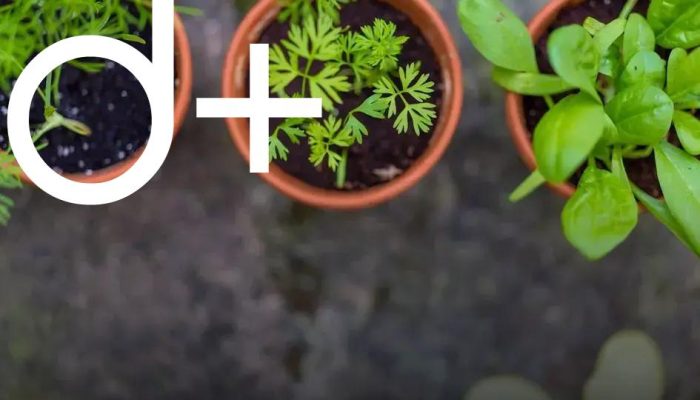Preparing your garden for winter can ensure its health and beauty in the seasons to come. As the cold months approach, understanding the seasonal changes and proper techniques becomes essential. From selecting the right tools to crafting a winter garden plan, taking these steps will help protect your plants from harsh conditions. Dive into our guide and learn how to maintain an indoor garden during winter while you prepare for spring blossoming!
Understanding Winter’s Impact on Your Garden
As temperatures drop and days grow shorter, it’s essential to understand the specific challenges that winter poses to your garden. During this cold season, your plants and soil require extra attention to survive and thrive. Cold weather can lead to frozen ground, making it difficult for plants to absorb water and nutrients. Additionally, shorter daylight hours can hinder photosynthesis, impacting growth and health.
Understanding how different plants react to cold can help you plan winter care effectively. Perennials might benefit from being trimmed back in late fall, while annuals may need full replacement come spring. Mulching is a key strategy to consider, as it can help to insulate roots and retain moisture in the soil. Additionally, it’s crucial to ensure that the soil is well-draining; otherwise, water can freeze around plant roots, causing damage.
Look out for frost damage which manifests as blackened or wilted leaves. Taking steps like covering plants with frost cloths or burlap can provide an additional layer of protection. Plants with weak or thin stems should be staked to prevent breakage from snow accumulation. Ensure any irrigation systems are turned off and drained to protect against freezing.
For soil, adding amendments like compost or organic matter can replenish essential nutrients washed away by winter rains. This practice also promotes beneficial microorganism activity that can enhance soil structure even in colder months.
Essential Tools and Materials for Winter Preparation

As winter approaches, having the right tools and materials is crucial for ensuring your garden thrives in the colder months. Start by checking your basic tools. Make sure shovels, pruners, and rakes are in good condition. Consider investing in a sturdy winter rake for clearing snow without damaging plants.
For larger gardens, a quality snow blower can be a valuable addition to your winter arsenal. Don’t forget about protective gear like gloves and boots to keep yourself safe while working in icy conditions.
Insulation is key. Stock up on mulch, such as straw or wood chips, to cover bare soil and retain moisture. Mulching also helps to regulate soil temperature, protecting roots from freezing.
For plant protection, have burlap or frost cloths ready to shield sensitive plants from frost damage. These can easily be wrapped around shrubs or laid over garden beds.
Consider storing essential fertilizers and having a supply of compost ready for any surprise warm days that allow for fertilization. Also, plastic or terra cotta pots, which can be wrapped or moved indoors, are great for protecting plants that can’t tolerate freezing temperatures.
Crafting an Effective Winter Garden Plan
To make the most out of your winter garden, it’s vital to develop a structured and efficient plan. Start by assessing your garden space and determining which plants can thrive during the winter months. Consider planting cold-resistant vegetables like kale, Brussels sprouts, and carrots. These hardy varieties can withstand low temperatures and even improve in taste after a frost.
Plan your garden layout carefully. Grouping plants by their temperature tolerance allows for easier management and protection. Use row covers or cold frames to safeguard more sensitive plants from extreme weather. It’s important to understand the specific needs of each plant species in your winter garden.
Make use of available resources to enhance your garden’s health. Incorporate organic mulch to insulate root systems and retain moisture. Mulching also helps prevent soil erosion and the development of weeds, which can compete with your crops.
Take note of sunlight availability during winter. Position your garden in an area that receives maximum sun exposure, as shorter days can impact plant growth. Remember to regularly check weather patterns and be ready to adjust your plan as necessary.
By crafting a winter garden plan that considers all these factors, you set the stage for successful growth even in the colder months. Use this opportunity to experiment with different plant combinations and winter gardening techniques to improve your skills and yield.
Protecting Plants from Harsh Winter Conditions

To safeguard your garden from the bitter cold, consider mulching, which helps maintain soil temperature. Mulching acts as a buffer, protecting roots from sudden temperature shifts. Utilize materials like straw, shredded leaves, or bark chips for the best results. Ensure that the mulch layer is about 2 to 4 inches thick.
Another effective method is wrapping plants. Non-breathable materials like plastic should be avoided; instead, use burlap or horticultural fleece to shield delicate plants. This extra layer of protection can prevent frost burn and dehydration.
- For container plants that are more vulnerable, try moving them to a sheltered area. A garage or a frost-free shed can offer adequate warmth.
- Consider building
windbreaks
or utilizing natural barriers like hedges to reduce wind exposure. Wind can dry out leaves and exacerbate cold stress.
- Water your plants occasionally during dry spells, as dehydrated plants are more susceptible to cold damage.
Pruning can help too. Trim any dead or damaged stems before the deepest freeze sets in. This reduces energy drain and helps the plant focus on root health instead.
Indoor Gardening and Maintenance During Winter
When outdoor gardening activities slow down during winter, indoor gardening becomes an excellent way to maintain your green thumb active. Whether you have a collection of houseplants or an indoor garden dedicated to vegetables and herbs, winter care is crucial.
Light is Essential: With shorter days, ensuring your indoor plants receive enough light is vital. Place them in south-facing windows, or consider investing in grow lights if natural sunlight is insufficient.
Water Wisely: It’s easy to overwater during cold months since evaporation rates are lower. Check the soil’s moisture at least once a week and only water when the top inch feels dry.
Humidity is another challenge during winter, as indoor heating can cause dry air. Increase humidity by misting your plants regularly, placing a humidifier nearby, or setting the plants on a tray with water and pebbles.
Temperature Considerations: Most indoor plants prefer temperatures between 65°F and 75°F. Avoid placing them near radiators, heaters, or cold drafts from windows and doors.
Avoid fertilizing heavily during the winter months. Most plants enter a dormancy phase and require fewer nutrients. Resume regular feeding as spring approaches.
Finally, regularly dust the leaves to ensure efficient photosynthesis and keep pests at bay. With these steps, you can maintain a thriving indoor garden throughout the winter months and be ready for the outdoor gardening season.







![BANNER 1 - HOME [QUADRADO]](https://dailyfindinvestment.com/wp-content/uploads/2025/01/BANNER-300-X-300.gif)
